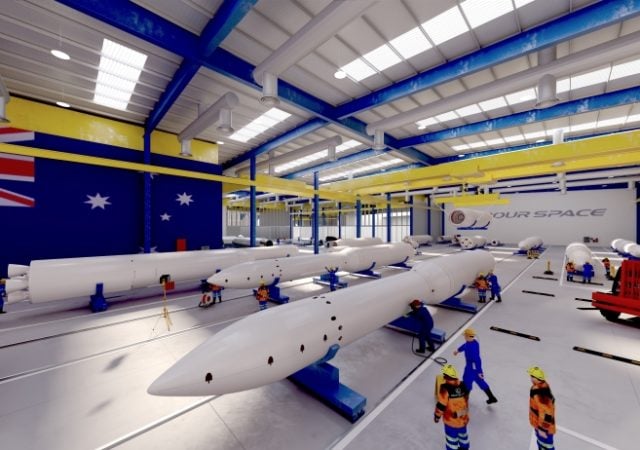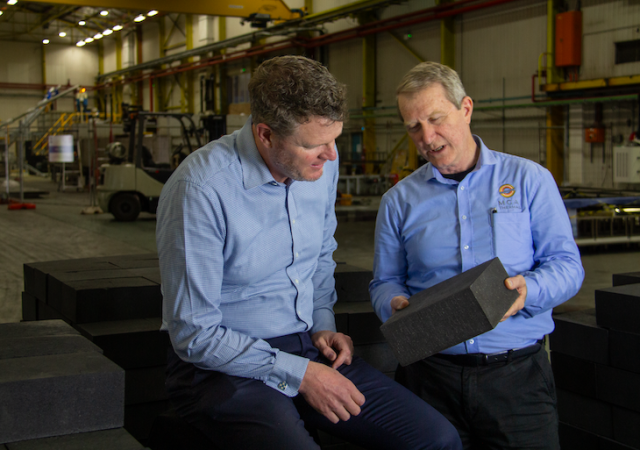Startmate CEO Michael Batko spent nine months talking to 15 Australian startup founders, from unicorns such as Mr Yum and Culture Amp, to Brighte, Forage, 5B and Mintable.
He published those interviews on his substack (see below for the links). Batko then took all he learnt and summarised their insights into “how to CEO” below.
The Job of a CEO
We’re all trying to figure out what the job of a CEO entails.
- It is like a blank sheet of paper with a bit of imposter syndrome. – Katherine/Brighte
- It is very hard to know whether I have spent my time well. Did I put my time where it needed to be? – Didier/Culture Amp
- In this way, each month, I redefine my role. And my role as CEO has evolved dramatically. Through all of these transitions, my role has also meant taking on much of the stuff that nobody is yet responsible for – Chief ‘Keep The Lights On’ Officer. – Lauren/Mintable
- I just wing it. I’m trying to figure out what my own role is. – Kim/Mr Yum
You need to keep reinventing yourself and your job description.
- Especially as the company keeps changing, there’s trepidation. – Katherine/Brighte
- My role has changed quite significantly over the years and I had to get comfortable with. There’s been a big change from Seed vs Series A vs Series B. They are almost incomparable roles. – Thomas/Forage
- It varies over time and depends on the exec roles you have at your company. – Didier/Culture Amp
- Mr Yum is 4 years old. It changes every 6 months, and each is so different to the previous 6 months. As the company changes, the role of the CEO evolves. I try to figure out what the role is that I have to play in that timeframe. – Kim/Mr Yum
What is clear is that setting the direction and guardrails is our responsibility.
- Where are we going and why are we going there? Everything I do flows from there. The other part that is important are guardrails of how to get there. That’s your values framework. – Kate/Glow Capital Partners
- Now I do not measure productivity through being an individual contributor. Now it is all about “Am I setting right goals? Is the team hitting them?” – Thomas/Forage
- My job is to give clear direction, a path and then make sure there is no ambiguity. – Alex/XY Sense
- The core job of a CEO is to find the direction. But nobody is almighty. – Duncan/Edrolo
We’re also responsible for hiring the right people and getting them in the right seats.
- The most important thing is to get the right people on the bus in the right seat. I headhunt the best people for my business. Usually, it is someone you previously worked with or someone else recommended. When you meet someone like that keep the relationship going. I’m relentless here and some of the best people I took me 1-5 years to convince them to join me. Hire people who are better than yourself and unlock them. – Michael/Fable
- When I hire senior leaders, I don’t just look for hard skills—another important factor is whether they can manage stress and accountability. Part of that is holding themselves accountable, even in their personal lives – look after themselves, sleep, diet. – Benjamin/Dovetail
Values are a tool to set expectations and give the team autonomy.
- All of your problems are people problems. The main thing is getting ahead of that and what is acceptable and not acceptable. What kinda person can work here and can’t work here? Set the values of what good and bad look like. Values will give you a framework to have prompt and timely conversations. Values are the one thing that you can always come back to. This behaviour is not acceptable because it’s not aligned with values. Here’s how can you change it so we’re all on the same page. It also allows you to give people more autonomy. Here is what I want you to achieve and here are your guardrails. I’ve given you structure and I trust that you can achieve it. – Kate/Glow Capital Partners
- My style is to try and delegate accountability downwards to take pressure off and get myself out of a job. As much as you can, you want to distribute responsibility to your team.. – Benjamin/Dovetail
- You get the behaviour you allow. – Duncan/Edrolo
Recognise your strengths and cover your weaknesses.
That’s what’s going to serve you and the company.
- Recognise your own strengths and weaknesses. Then hire the people to cover your weaknesses. Get someone else to own the parts that you’re not good at instead of you ie other cofounders. And then keep each other accountable. – Michael/Fable
- I surround myself with people to do things that I don’t like doing. I used to try to fix my weaknesses, but now I’m all about enhancing my strengths instead. – Rory/Propeller
- In your 20s, you want to get good at everything, especially your weaknesses.In your 30s, you build an appreciation for what you’re not good at. Find the thing you are good at and triple down on that. – Kim/Mr Yum
- My mind tends to go to the big picture; and to complement that, I have to surround myself with people who love details. – Nicole/5B
It is a real trade-off between collaboration and speed.
- There are some things you have time for. There are some things you just don’t have time for. – Katherine/Brighte
- But when the team is stuck making a decision, I have the authority to just make a call. My key levers are firing, deprioritising and defunding and I still do that. Where I add a lot is a sense of urgency. – Benjamin/Dovetail
You are here for a few decisions, which change the company’s trajectory.
Give yourself permission to be the CEO.
- But I definitely do captain’s calls. Sometimes you just have to accelerate an outcome. The team respects captain’s calls, especially in difficult times. – Katherine/Brighte
Strategy
Strategy doesn’t mean working on one thing at the exclusion of everything else.
It is about sequencing the journey to success.

Photo: AdobeStock
- Strategy should be a path. What is your core challenge? What is your path to get around it? “Strategy is a pattern of allocating resources.” A strategy misconception is that we’re narrowing everything down to only one segment and nothing else. Strategy is not about saying Yes to one thing to the exclusion of all others. – Didier/Culture Amp
- I see the company as a restaurant. It exists with the goal to feed people. The ingredients are all the things we can use/do to solve the goal. Strategy is the recipe we use, what’s the best way we can assemble what we have to hit the goal. We have restaurant principles that always apply, like cleaning as you go and using fresh ingredients. We can hypothesise what the best way is to hit the goal. How do we know whether the recipe is good or bad? Our customers will tell us. – Rory/Propeller
But the strategy won’t work if it is not anchored in reality.
- Once we have alignment on the OKRs, we do the financial plan and budget. Then we link the OKRs with the budget and plan. – Katherine/Brighte
Strategy communication is laddered.
- We first set the strategy with the leadership team, then Heads of. Once we have their buy-in they contribute to wording. Then we communicate to the whole company. – Katherine/Brighte
- I don’t believe in cascading OKRs. Each department can have its own strategy. These fit together and support each other. The company strategy helps you decide what is important and if each team can help. – Didier/Culture Amp
You need the right people in the room to set strategy.
Not everyone is cut out to work on strategy.
- It is good to get your team involved, but not everybody is a blue-sky thinker. There are a lot of people who go straight to the practicalities of execution and resourcing, and therefore find long-range strategic thinking difficult. – Kate/Glow Capital Partners
- If you want input, you write a doc on vision and we have that discussion. Trust is earned, faith is given. You have to earn your spot to do strategy. – Duncan/Edrolo
One of the best practices is to have a Strategy on One Page (SOP).
- We have a printout of the strategy on a page in the meeting rooms. – Katherine/Brighte
- Keep the message succinct. We have our company strategy on one page. – Alex/XY Sense
- We have the projects as Google Slide to layout all the projects. They include the company goals and all initiatives. I refer to that frequently. – Rory/Propeller
- We then create a 1-page strategic plan. The plan includes, Purpose, BHAG – Big Hairy Audacious Goal, Values, Initiatives. How we’re going to get there, Strategy – how do we enable all the goals and visions and Trimester priorities. – Zoe/Eugene
- We now also have our strategy on one page with our Series C milestones on it. Everyone in the business can talk to that one page. It is the anchor that we use in all of our communication and we use it fortnightly in our All-hands company wide meetings and quarterly in our Board meetings. In addition to that, each part of the business has its own slide pack that sits behind their section of the strategy that they use on a more frequent basis. – Nicole/5B
Goal Setting
There is no one perfect way to set goals.
Goal setting is highly company specific.
- We’ve never implemented OKRs. The frameworks I use are strategic initiative and KPIs. Some of the stuff is not easily broken down or measured. You have to accept imperfection. – Kate/Glow Capital Partners
- Now we have company focus areas. We make them jazzy and memorable. It is more about setting the right incentives and encouraging the right behaviour rather than the numbers. Focus areas successfully communicate what we’re focused on strategically. – Benjamin/Dovetail
- Proximate goals – people can spend way too much time to come with measurements. It is true that they are helpful, but you often get stuck with statements like “we need more data (!)” which is a waste of time. The beauty of proximate goals is to go in the right direction and get on with them. My bugbear is too much time spent obsessing about defining the right goal metric. – Didier/Culture Amp
- The Goal is the objective. The key result is a guide post, so the teams are more or less metric-driven. – Rory/Propeller
- OKRs often don’t have a deliverable with a deadline. We can’t just release a feature and the next time around it screws up. For teachers changing something, every year is a bug, not a feature! We have to shape our goals to solve that. We try to have everything we do be the best thing we have ever done. There is no point in building something worse than already exists. We have hard deadlines that are not up for debate. – Duncan/Edrolo
Goal setting changes over time as the company changes.
- Two years ago we changed the way we set strategy. You have to continuously adapt your OKR process. Provide as much certainty as you can. Sometimes you can’t give certainty. – Katherine/Brighte
- I’ve stuffed up so many times. We first implemented OKRs in 2020, this is the third year we’re doing them. – Thomas/Forage
Goal setting is an operational pain. It takes a long time.
- From launch to finish it takes us roughly two months. That’s why we do it annually, because it takes so much time. – Katherine/Brighte
- But when things are volatile you have to change the cadence and update more often. We now reset the goals quarterly. – Katherine/Brighte
- We set 1-year metrics. At the end of Q2, we do a reforecast. If we’re wildly off we calibrate numbers and burn. If we’re absolutely smashing it we ratchet the numbers up. – Thomas/Forage
- We’ve tried month by month, week by week, bottom up and top down OKRs. We’ve done them all. We don’t have OKRs currently and for this quarter, as we haven’t been able to make OKRs usable for us yet. – Nicole/5B
Each objective should have a clear person responsible to deliver it.
- One exec leader is responsible for each objective. They then talk at our All Hands about why it is important. It is their responsibility to communicate whether something won’t be achieved and why it is blocked. – Katherine/Brighte
- Now we have these 6 core metrics that matter and each one has one person responsible for it. – Thomas/Forage
- Each initiative then has a project lead. They take info as input, and figure out the goals. – Rory/Propeller
You want the whole team to contribute to the goals to get buy-in.
- Brighte does sessions for two weeks to learn more about the company objectives, where anyone can jump on the call to learn more – Katherine/Brighte
- Last but not least – the team’s buy-in is key! I try to invest in problem definition, sharing context, and setting priorities. And then let the team tell me where we can get to. – Lauren/Mintable
- Before we have set the strategy for the upcoming trimester, each team meets to discuss gaps, blindspots, learnings, and opportunities. We also survey the team for cool ideas that can be experimented with for the next trimester. – Zoe/Eugene
You can give your leadership team free rein on how to set their goals.
- I don’t care how you set goals for your own team, you know your number to hit. The goals are all different – it reflects the nuances of the team – if that delivers on the headline, I don’t care how you get there. I used to think you had to have one way for everyone, at the end of the day what matters is the end result. – Thomas/Forage
- Each team sets their own performance goals. – Benjamin/Dovetail
- Each team is different. – Duncan/Edrolo
There should only be a handful of 3-5 key company goals.
Ideally, they are easily measurable.
- Revenue, EBITDA, customer satisfaction / retention, brand awareness are some of our goals. If we miss them we know it. – Kate/Glow Capital Partners
- We have two levels of goals with 6 metrics each. Annual KPIs – 6 metrics. Enduring Metrics – 6 metrics. Our annual KPIs are about how we measure progress for 2022. They are goals about what’s most important that year: US entry. Entry level talent only. # of US student enrollments. Enduring mentors are the long-term metrics that never change – revenue, contribution margin, # of students hired. – Thomas/Forage
- We have 8 company-level objectives. They are 8 intentions that we’re manifesting over the next 3 years. 4 on culture. 4 on how we win. The team objectives ladder back up to that. – Didier/Culture Amp
Communication
The vision can be communicated by painting a future picture.
- Now, I start with the Vision and Mission and what that looks like. We’re trying to climb to top of Mount Everest, this is what it looks like. How does the world look different when we succeed? Now let’s talk 12 months ahead. We just need to get up to the next camping spot, what does that look like? – Thomas/Forage
- I have a vision presentation, which keeps us thinking about the 2030 goal. – Ajay/EntryLevel
- One way I do that is to paint a future picture all the way to 2025. What does it feel like? What does the destination look like? – Didier/Culture Amp
But even more impactful than that is how you talk about the company on a daily basis and keep repeating the same message.
- For me, it is a lot about the way I talk about the company outside of the company on social media, press, podcasts. Unexpectedly, that makes a very big impact on the team. – Kate/Glow Capital Partners
Leadership teams and meetings are important but managed to varying effectiveness.
- Our leadership meetings are 2 hours and on Monday afternoons so they can go over time. We all write functional updates ahead of the meeting itself but then the meeting itself is fluid. – Michael/Fable
- Our leadership team meetings are fortnightly. My CoS holds the pen on the team meetings. Our framework is for me to provide an update on what I see, two deep dives, rest of team input and talk through dependencies. The Leadership meeting is very similar to our board meetings. The point of the meeting is not a reporting update, the point is to get into hairy existential exercises in the business. Once everyone is on Zoom, every second is so valuable. – Thomas/Forage
Writing is often a key cultural expectation to build shared language, understanding, alignment and rigour in decision-making.
- We communicate the company strategy through multiple blogs. – Katherine/Brighte
- The leadership team writes mini briefs. “It is December of the following year, you’re proud as punch and you have to prep a presentation to the board – how did you get there?” – Thomas/Forage
- We have a big writing culture. The fish rots from the head. I personally much prefer writing. It is the nucleus of our team of all ex-lawyers and bankers. We use Notion for most of our briefs. We use Loom too but writing is DNA. It is superimportant to us as we’re a globally remote and distributed team from Perth to London. Async communication is the key for that and writing is how we show it. – Thomas/Forage
- We communicate our strategy through asynchronous internal blogging, all on Notion, and fortnightly company all-hands meetings. The most important is the monthly founder updates which are fairly long written updates. We use that to drive strategy. Our blog covers all sorts of things—how we hire, how people management should work, firing, how we’re scaling, our hiring challenges, founder vision, and high-level strategic stuff. – Benjamin/Dovetail
- What most of us do on a daily basis is knowledge work. The cycle of knowledge workers looks like this: Reading thinking writing talking building. I find writing to be the most important component. – Duncan/Edrolo
- I spend a lot of time writing my thoughts down too. If nothing else, my writing skills have improved 1000x since I became a founder. The need to communicate is so frequent and important, especially since our team is global and fully remote. – Lauren/Mintable
Weekly All-Hands are your friend to talk about the vision, milestones and highlights.
- An additional mechanism is our Monday morning all-hands where we highlight the important milestones. – Kate/Glow Capital Partners
- Sometimes we can over-index on the employers as they are paying us So we keep refocusing the team at All Hands and with Shoutouts that we care about student victories rather than serving the employer to put the student at the heart of our journey. – Thomas/Forage
- We do weekly all-hands with updates. We do a monthly demo day with deep dives. – Rory/Propeller
- We have a weekly All-Hands where we call out projects which are interesting to the team. I try to not always present at All-Hands and give the teams ownership. – Alex/XY Sense
- We have a whole company “tasty bites” meeting.
- It is a 45 mins meeting – founders do updates, and pump through all functions in the company. Different team members speak on behalf of their functions too so it’s very participative. – Kim/Mr Yum
Meetings are for quality conversations. The work should be done upfront.
- Given we’re remote and distributed we try to maximise quality conversations, that’s the leading indicator for trust. When you don’t have quality conversations trust breaks down. If you overweight too heavily on asynchronous communication, there are no quality conversations. You need a healthy mix of sync and async. We went too heavy on async and now we’re trying to calibrate back. Sometimes that requires a 6pm and 8am call. That’s something we do have to do to build trust for the teams. – Thomas/Forage
- You have to plan and execute. Planning is better if you can discuss it with people. Even if after the discussion the plan is only 1% better it is time well spent if you have more than 100 people in the company. I normally find that the plan (direction) is 50-500% better after discussing it with Ben and Jeremy. You want to have a discussion with people who can help you upgrade the plan. – Duncan/Edrolo
Difficult Conversations
When letting people go or someone is leaving the team, speed is of the essence.
- Everyone will find out about it anyway. So it is better that they find out about it from you. In the absence of info, people will always make stories. – Kate/Glow Capital Partners
- You always want to be clear from the start to avoid lots of conversations. – Rory/Propeller
- We don’t always do it well. There is no set formula I’m aware of. Basically, for the most sensitive information, you have a waterfall release and ‘read in’ people as it makes sense before entire company-wide comms. – Duncan/Edrolo
- My view on bad news is it needs to be delivered fast. It can be tempting to procrastinate and do small talk. That feels awful to experience from the other side – everything seems rosy and then suddenly it flips. I had a medical professional do this to me once when I was pregnant – 10 minutes of upbeat small talk, followed by “we don’t think your baby will make it”. It was horrific because I’d assumed given their tone that there was no news and was feeling happy. – Margot Balch
It is important that you control the narrative as a CEO.
Acknowledge the hardship, be transparent and make the team feel safe.
- The role of a CEO is very similar to parenting. Your team is screaming “Help me feel safe”. Metaphorically, hug them and tell them everything is ok. There is no point pretending it is not happening. It is a situation that is unpleasant for everybody, nobody wants this, let’s use this as something productive. – Kate/Glow Capital Partners
- When a person is leaving you have to control the narrative rather than them. We had a period where a lot of people weren’t passing the probation period. People were thinking “if this person got fired during the probation period, am I gonna get fired too?” We addressed that in a blog post, by simply saying if you are off track, you will know. – Benjamin/Dovetail
- You always let people leave with dignity. Treat people with respect. If it is bad news, ask yourself if it is my news to share. You want psychological safety. – Didier/Culture Amp
- I think one of the lessons I learned in COVID – as a leader a lot of your job is to absorb fear. Fear is natural, you don’t ignore it. Sometimes you just nod and acknowledge it. What can we actually focus on? What can we control? – Didier/Culture Amp
Acknowledge, soothe and refocus the team on what’s important.
- Where are we at right now? I understand that you feel upset and frightened – let’s talk about that. But look at the vision and the work we are doing matters. We have no shortage of great people here, and we are all here to support each other. – Kate/Glow Capital Partners
- I know that everyone talks and everyone is an adult. This happened. It is unfortunate. But this is what we’re doing about it. – Thomas/Forage
Offsites are important for the team to get together and work through strategy and company goals.
- An external facilitator at an offsite can work wonders to help you align the leadership team at the offsite. – Katherine/Brighte
- Appointing a “dissenter” to challenge the discussion and outcomes is healthy to get to the right outcome. – Katherine/Brighte
- Every 4 months we have a “festival week”. We bring the team together virtually or in person. Each team lead does a presentation, we bond and the clinical staff shares stories to remind us why we do what we do and set team goals that align with the broader business strategy. – Zoe/Eugene
The job of a CEO is ever-changing and can be heart-wrenching.
So, I wanted to finish off with this quote by Lauren from The Mintable.
“I can only ever do the next best thing.”
No matter how crazy things are or how many mistakes I’ve made leading up to a given moment, I can always figure out the next best thing to do.
And that’s all I can do in the next moment.
Thanks for reading! A big kudos to all the CEOs + links to their interviews
- Benjamin @ Dovetail
- Thomas @ Forage
- Kate @ Glow Capital Partners
- Michael Fox @ Fable
- Ajay @ EntryLevel
- Katherine @ Brighte
- Alex @ XY Sense
- Rory @ Propeller
- Margot Balch @ The One Two
- Didier @ Culture Amp
- Duncan @ Edrolo
- Lauren @ Mintable
- Zoe @ Eugene
- Nicole @ 5B
- Kim @ Mr Yum
- Bonus: Michael Batko @ Startmate
A special shoutout to Nick Crocker who prompted this journey years ago when he asked me why I don’t surround myself with CEOs and learn together – check out his substack ‘Branches’.
- Michael Batko is CEO at Startmate, the epicentre of startup ambition in Australia & NZ.
This article is republished from Batko OS under a Creative Commons license. Read the original article.




















Trending
Daily startup news and insights, delivered to your inbox.